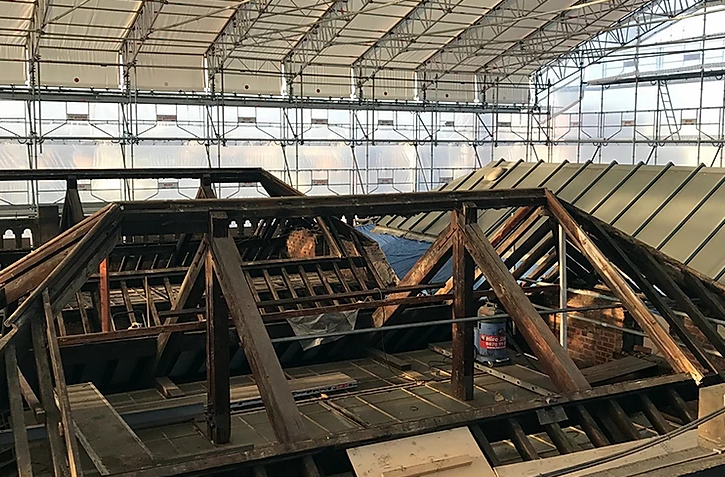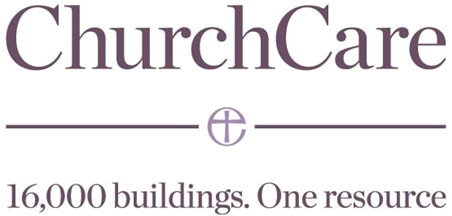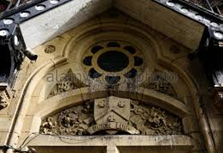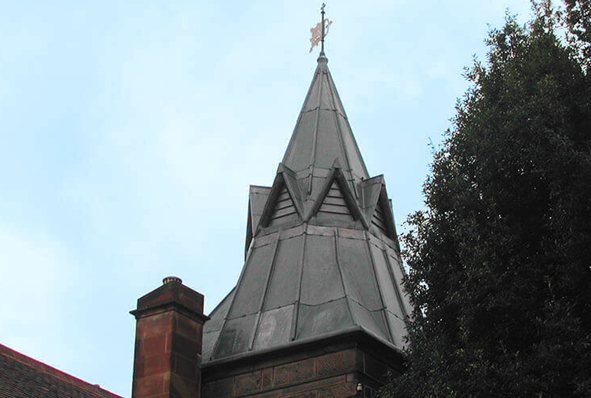Heritage Roofing
Heritage roofing - maintaining our iconic buildings
The UK is home to some of the most iconic buildings in the world, from stunning churches and cathedrals to historic stately homes. Each and every one of these remarkable feats of architecture requires regular maintenance to ensure they remain in the very best condition, allowing them to be enjoyed for generations.
Cathedral Care
Restoration and upkeep of cathedrals
There are some 42 Anglican cathedrals in the UK, not to mention 20 or so Catholic cathedrals. Cathedrals form the most important collection of historic buildings in England. The largest and most ancient are internationally famous, the smallest are usually among the most significant buildings in their region and even the most recent are architectural masterpieces.
Master Craftsmen
Championing our heritage with modern craftsmanship
Twenty years ago, English Heritage (now Historic England) published its first-ever Register of Buildings at Risk across England, which featured nearly 2,000 buildings and monuments that were ‘neglected, broken and unloved’. Recently Historic England was delighted to announce that over two-thirds of those buildings were now safe, in both urban and rural areas right across the country.
Traditional Lime
Lime: it’s better for buildings – and for the environment
It is now fairly well known that cement is not good for old buildings and that lime mortar should be used. But why? What are the advantages and what are the disadvantages? In order to begin to answer those questions it is necessary to understand the nature of traditional building, the process by which buildings used to be built, and how it differs from modern construction, the process by which we build today.
Audio Visual
Audio visual equipment in church buildings
This guidance is issued by the Church Buildings Council under section 55(1)(d) of the Dioceses, Mission and Pastoral Measure 2007. As it is statutory guidance, it must be considered with great care. The standards of good practice set out in the guidance should not be departed from unless the departure is justified by reasons that are spelled out clearly, logically and convincingly.
Read More...
CRE Events
After the Midlands, onward to Milton Keynes
"CRE Midlands reminded me of the giddy days when it first began – the venue was packed with exhibitors and visitors and there was a busy atmosphere. The whole thing looked great."
Insurance
You need to ensure that reasonable precautions are in place at your church to keep it safe for those who use it. To do this, you need to think about what might cause harm to people.
You will then need to decide if the precautions already in place are adequate. If they are not, you may need to identify further action to prevent any danger. When done formally, this is known as a risk assessment.
Church Maintenance
Church maintenance and repair: Calendar of Care
Just as prevention is always better than cure, maintenance is preferable to major repairs. But, such repairs may not always be avoidable. Church Care offers a monthly guide in our coming issues Starting in Spring
We can help you understand the common problems and areas that need your special attention, and give you tips for regular maintenance schemes.
Pest Control
Michael Palin warns of pest threat to churches
Michael Palin is supporting the future of the UK’s historic churches and chapels with a voiceover for a new animated film. The 80 second animation, produced for the National Churches Trust, highlights why churches are some of the nation’s best loved buildings.
Town Halls
The history of the great Victorian Town Halls of Northern England
From industrial squalor to civic pride, the story behind some of the most impressive buildings of the North involve a unique mix of economics, grand designs and noble sentiments within communities.
Lead Roofing
Lead is one of the oldest materials in the roofing industry and is still commonly used throughout the world today.
Lead roofing is a traditional roofing method which has been used in the industry for hundreds of years, and is therefore proven to be extremely reliable. Lead roofing, and sand-cast lead, in particular is ideal for old buildings such as churches or historical renovations, whereas milled lead roofing is a mass-produced alternative, used for precision and accuracy in homes and commercial buildings alike.
Lightning Protection
When lightning strikes are you protected against this act of God?
The issue of lightning protection in churches is one that has exercised this publication for many years. In this four-part series of spotlights on the issue we will be revisiting various aspects of the subject, beginning with an overview of current thinking.
SEARCH OUR DIRECTORY
John Williams & Company - still thriving after over 140 years
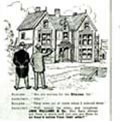 John Williams & Company was established in 1870, although the origins are obscure and could date back as far as 1822 with a 'Williams' in Bangor, North Wales. It was incorporated as John Williams & Company Rotherhithe Ltd. in 1931. This name was changed in 1993 to John Williams & Company Ltd. and in 2004 the present company John Williams & Company (Contracting) Ltd. was formed.
John Williams & Company was established in 1870, although the origins are obscure and could date back as far as 1822 with a 'Williams' in Bangor, North Wales. It was incorporated as John Williams & Company Rotherhithe Ltd. in 1931. This name was changed in 1993 to John Williams & Company Ltd. and in 2004 the present company John Williams & Company (Contracting) Ltd. was formed.
The Greenwood family, who owned the company until 2004, had been associated with the business since 1890. At that time the company was located at Crown Wharf, Chelsea as large dealers in cement. The development of a roofing contracting and quarried slate merchandise trade began around the turn of the century when the firm owned depots in North Wales, Faversham, Newhaven, Southampton docks and Rotherhithe in London, which was the main location and head office.

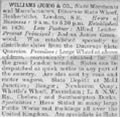
Pictures from the archives - 1900s
Originally slate was transported by ship and the premises at Rotherhithe was ideally situated with its own wharf on the river Thames where barges full of Welsh slate could unload. In addition to selling and fixing roofing slate the company processed slate for manufactured products such as steps, window cills, mortuary slabs and panels for electrical switch gear.
Shortly after the First World war the company also acquired a clay manufacturing business at Barton-upon-Humber in Lincolnshire. The Greenwood pantile even survives to this day as part of the Goxhill range of tiles.
The period since the Second World War has seen many ups and downs. The Bangor slate works and Barton-upon-Humber tilery were closed but the contracting operations expanded in Kent and Sussex. These also developed from pitched roofing into flat roofing, ceramic wall and floor tiling as well as general small building works.
In the 1970's there was a revival of interest in natural roofing slate among architects and planners and the company was able to take advantage of this. Apprentices were trained at our depots in Rotherhithe and Dover, many of them the sons or grandsons of existing employees. In 1974 the company acquired the business of Gordon H Richards, a quarry main agent in Caernarfon. In the same year the yard of an old established builder 'Harman' in Lympne near Hythe Kent was acquired and the Dover depot moved from its rented accommodation into the premises they still operate from today. Further developments in North Wales came when part of the business of another old established firm, J. G. Tuxford, based in Conwy was taken over in 1986.
The decline of the post-war building boom took its toll on the Industry and the company decided to concentrate on its core strengths in the refurbishment market using traditional materials and quality craftsmanship. This decision stood the company well during the severe recession of the early 1990's when many other businesses failed.
Such is the company's reputation that staff have always been in demand to talk at seminars and to display their skills and knowledge at heritage and craft events. The company's commitment to its employees was recognised in 2000 with the awarding of Investor in People status to our Kent office at Lympne.
Chairman and Managing Director John Greenwood retired in 2004 and with no direct descendents to take on the company the business at Lympne was sold to the branch Managing Director John Howland who has worked for the company since 1974. Gordon H Richards was successfully sold and continues to trade independently. Tuxford-Williams of Wales was closed. In 2006 the company became TrustMark approved. TrustMark is the Government endorsed standards scheme which vets contractors and provides accreditation designed to give proof of quality & standards for the domestic customer.
Today John Williams & Company (Contracting) Ltd. continues to thrive. Quality remains the top priority and by devoting resources to training and development the traditions of the past become the standards of the present.















